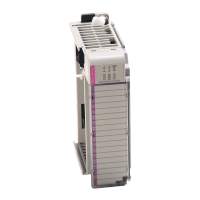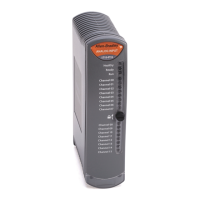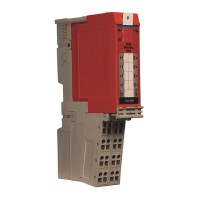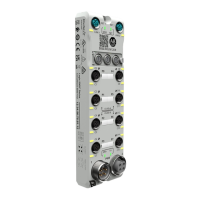102 Rockwell Automation Publication 1794-UM061B-EN-P - March 2020
Chapter 7 Configure your Digital Module on an EtherNet/IP Network
This sets the IP address in the hardware. This IP address should be the
same IP address that you assigned under the General tab.
On this screen, you can also specify port speed (10 Mbps or 100 Mbps)
and duplex mode (autonegotiate, half-duplex, or full-duplex). All modules
on the same subnet must be configured for the same port speed and duplex
mode.
Using DHCP software to set the IP Address
DHCP (Dynamic Host Configuration Protocol) software automatically assigns
IP addresses to client stations logging onto a TCP/IP network. DHCP is based
on BOOTP and maintains some backward compatibility. The main difference is
that BOOTP allows for manual configuration (static), while DHCP allows for
both static and dynamic allocation of network addresses and configurations to
newly attached modules.
Be cautious when using DHCP software to configure your module. A BOOTP
client, such as the EtherNet/IP modules, can boot from a DHCP server only if
the DHCP server is written to also handle BOOTP queries. This is specific to
the DHCP software package you use. Check with your system administrator to
see if your DHCP package supports BOOTP commands and manual IP
allocation.
Duplicate IP Address
Detection
These EtherNet/IP modules (and their future revisions) support duplicate IP
address detection:
• 1756-ENBT, firmware revision 3.2 and greater
• 1788-ENBT, firmware revision 2.1 and greater
• 1756-EWEB, firmware revision 2.2 and greater (For more information
about this module, see the EtherNet/IP Web Server Module User Manual,
publication ENET-UM527
.)
When you change the IP address or connect one of these modules to an
EtherNet/IP network, the module checks to make sure that the IP address that is
assigned to this module is not the same as that for any other device already on the
network. If the module determines that there is a conflict (some other device on
the network already has the IP address), the EtherNet/IP port of the module goes
into conflict mode, where the module’s:
ATTENTION: The EtherNet/IP module must be assigned a fixed network
address. The IP address of this module must not be dynamically provided.
Failure to observe this precaution may result in unintended machine motion
or loss of process control.

